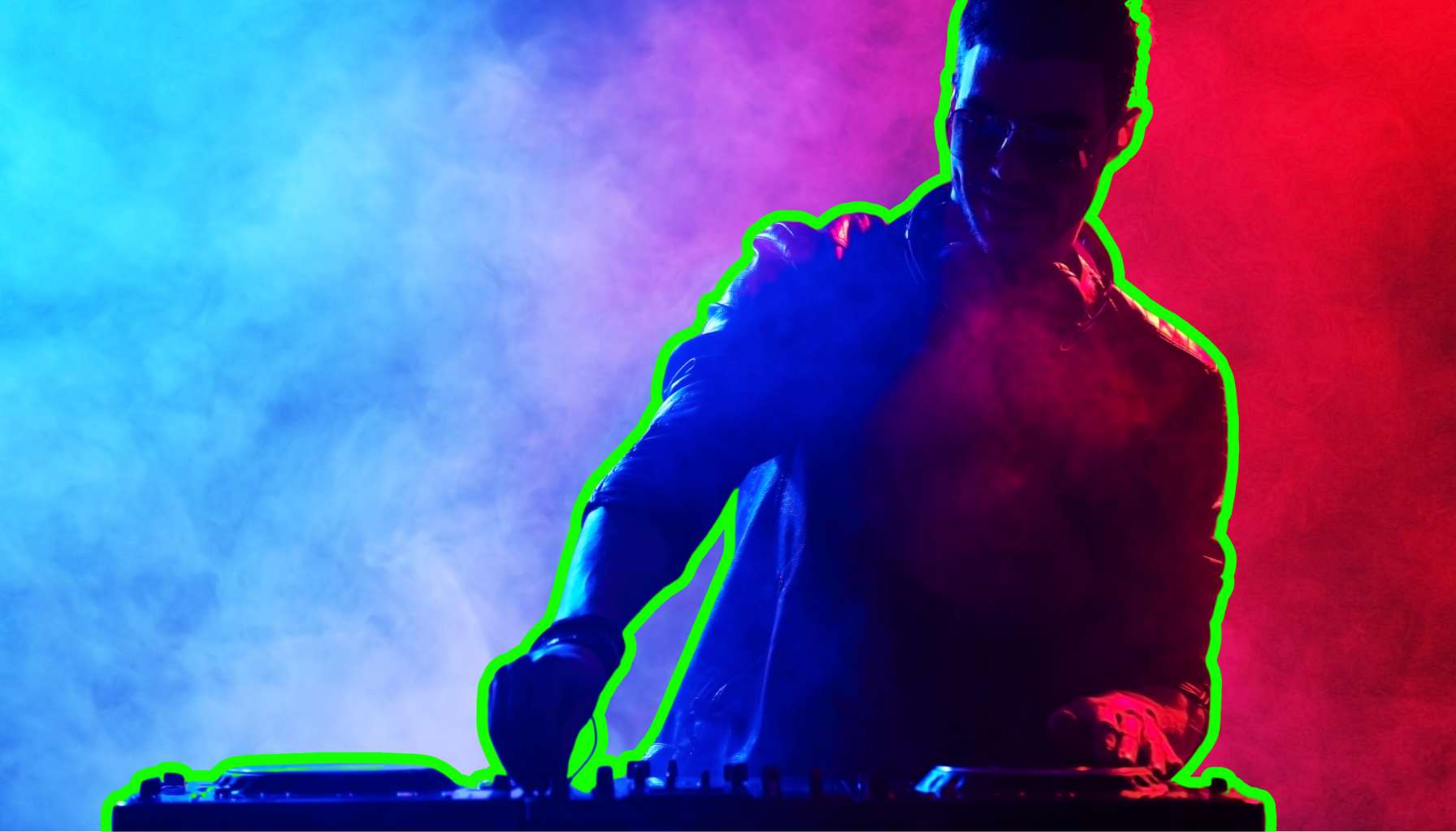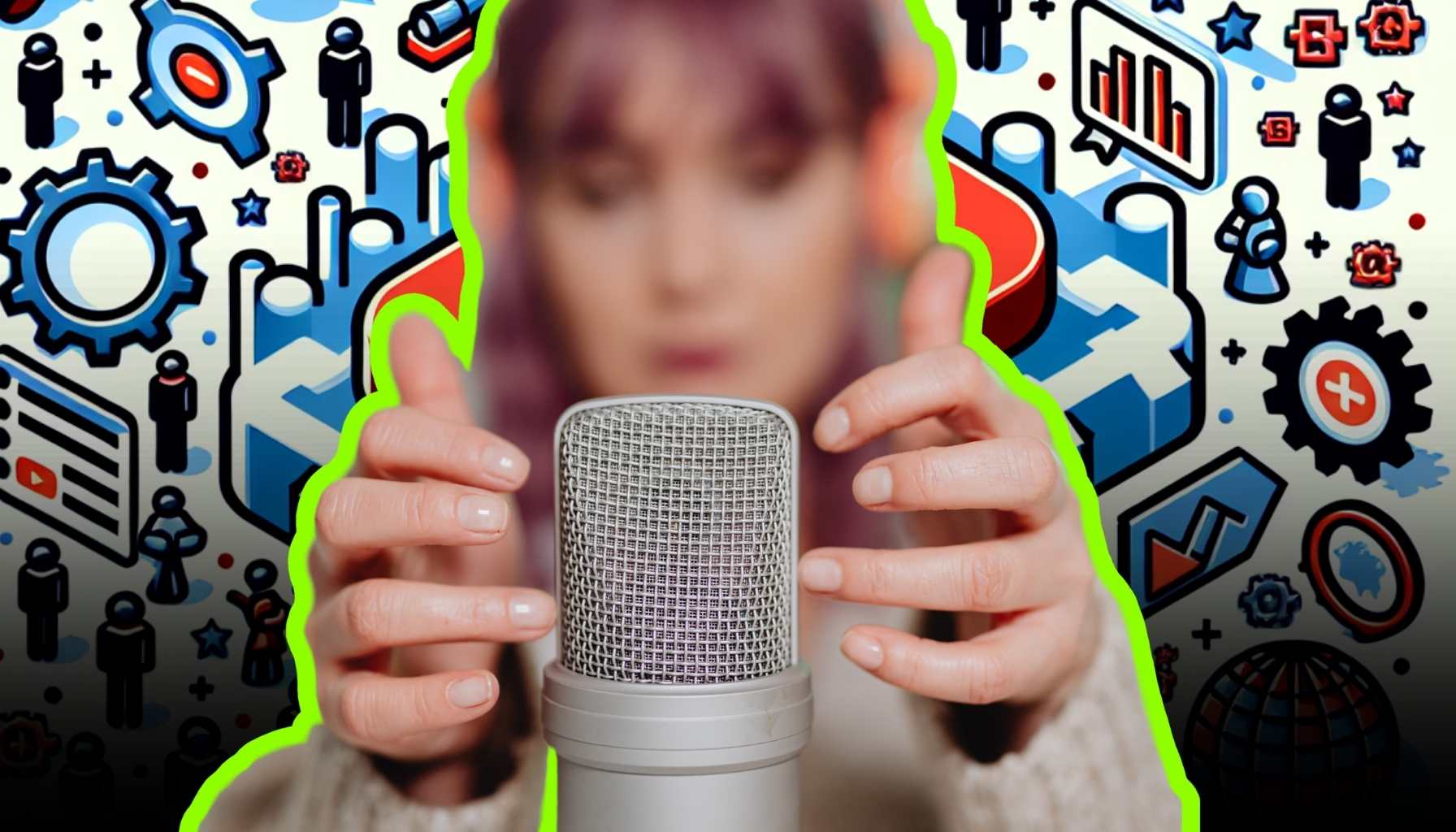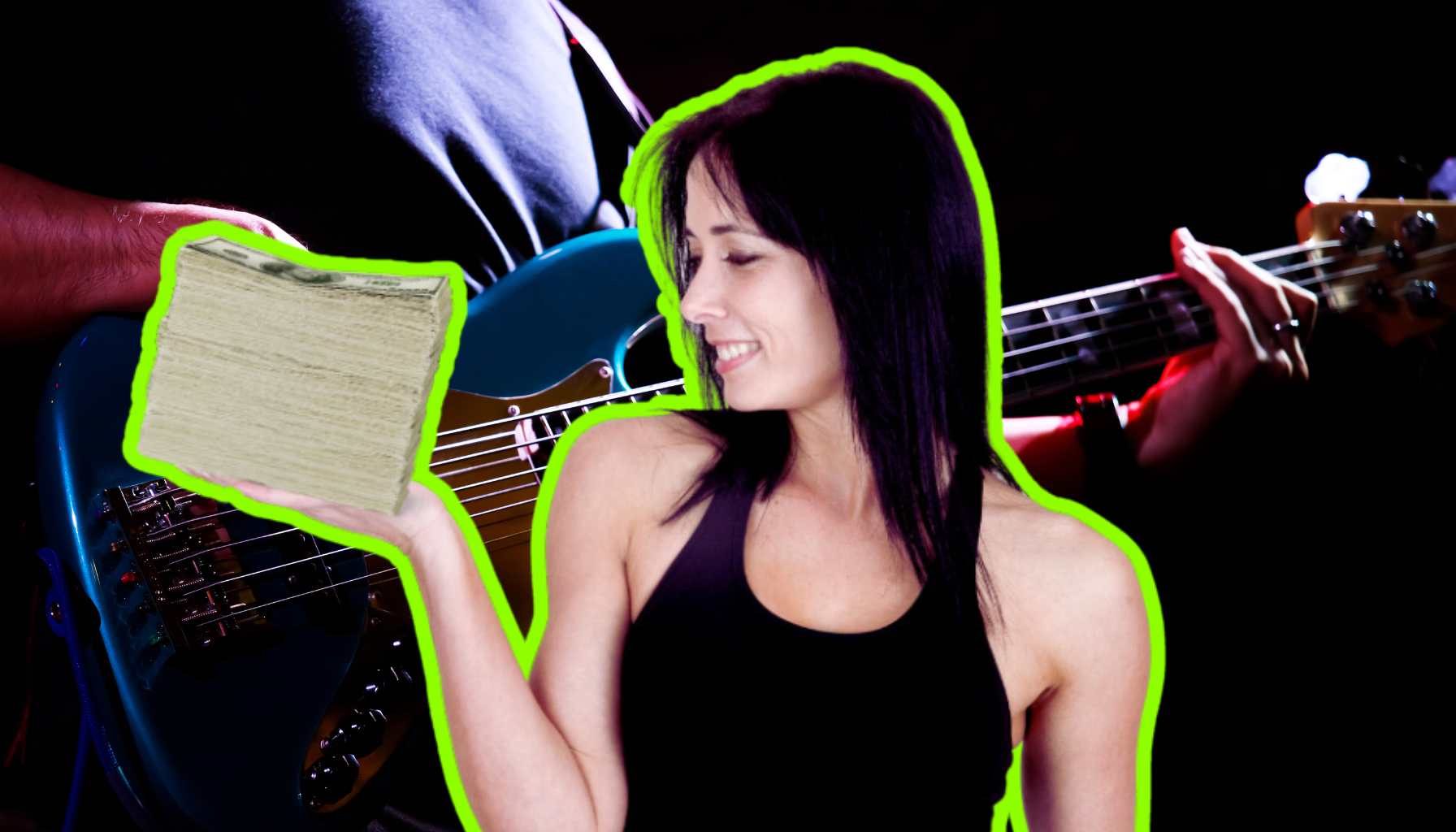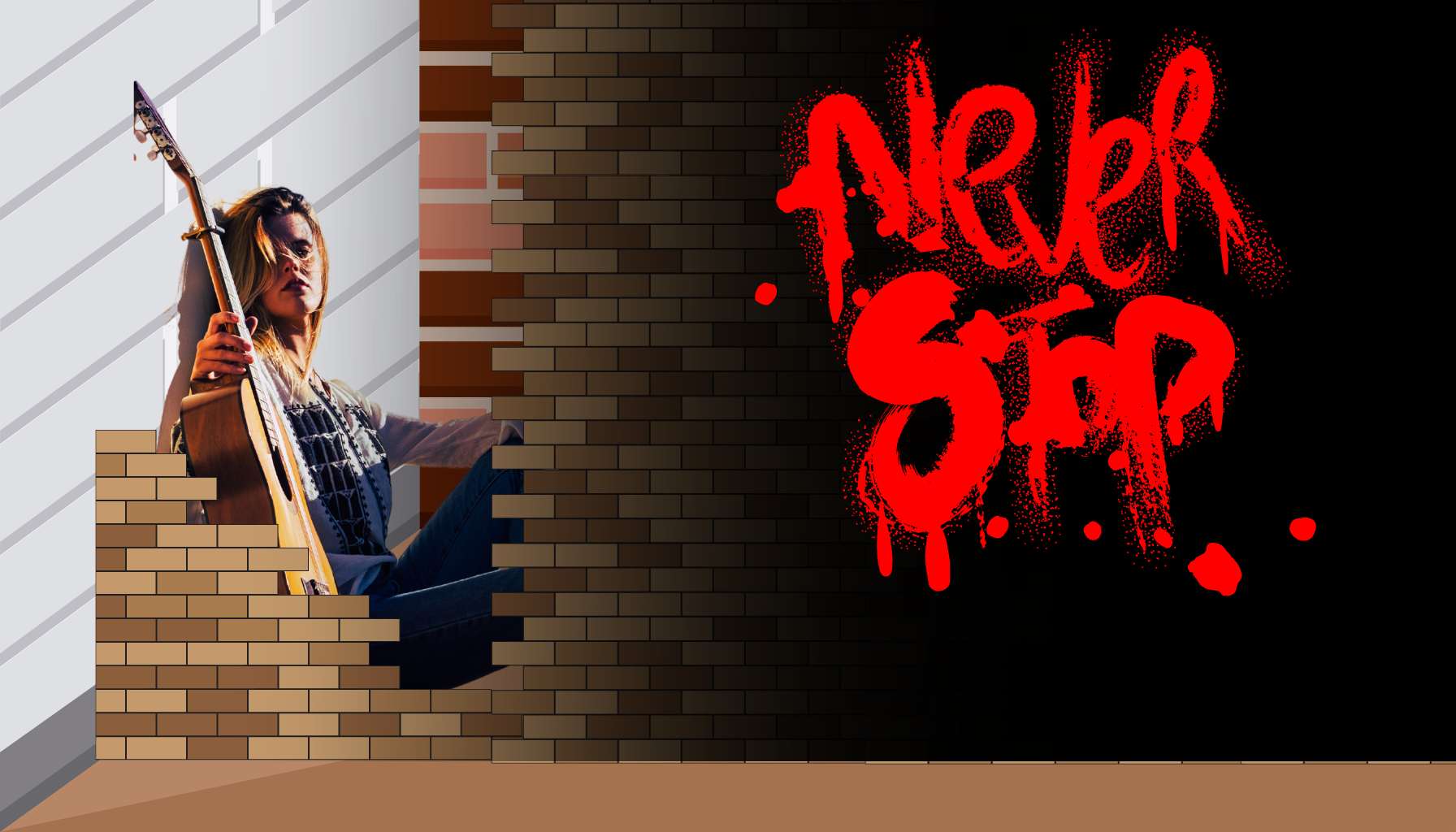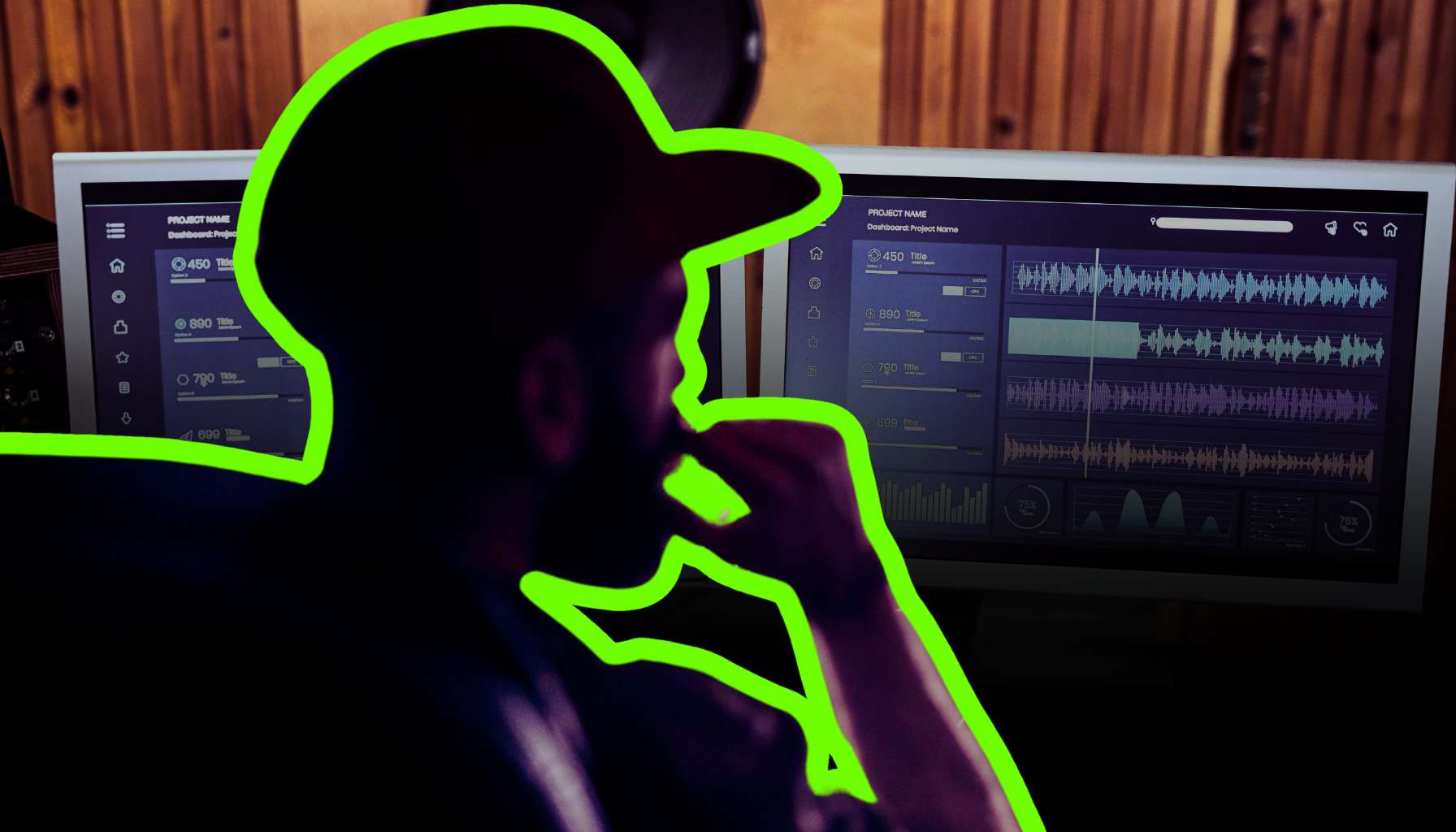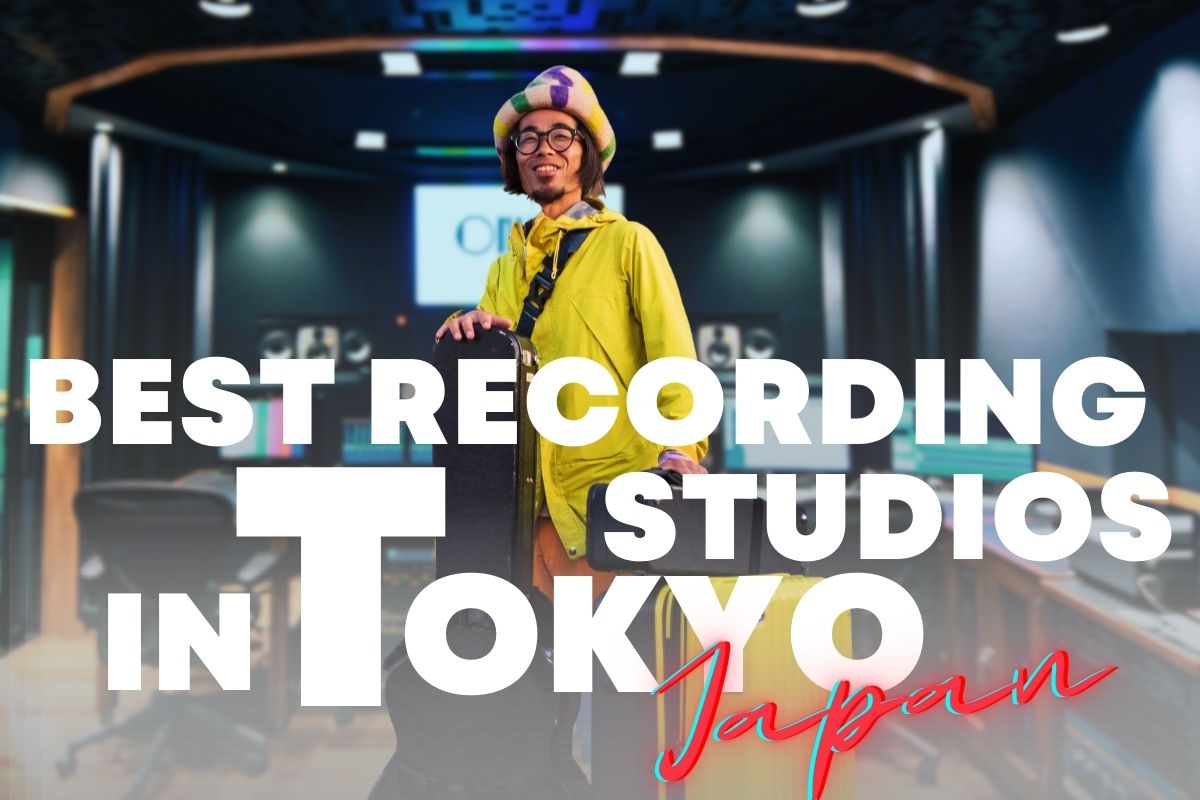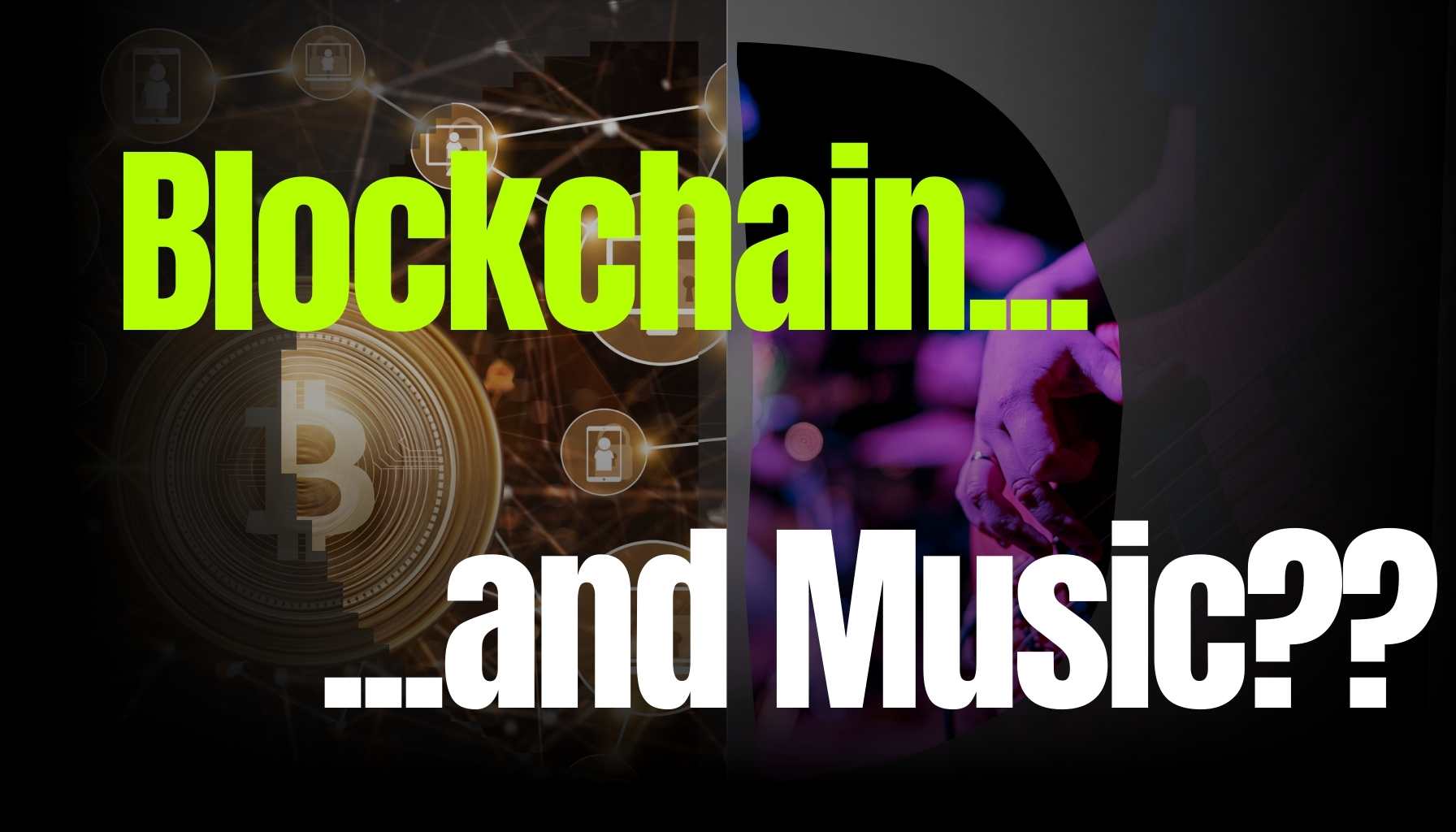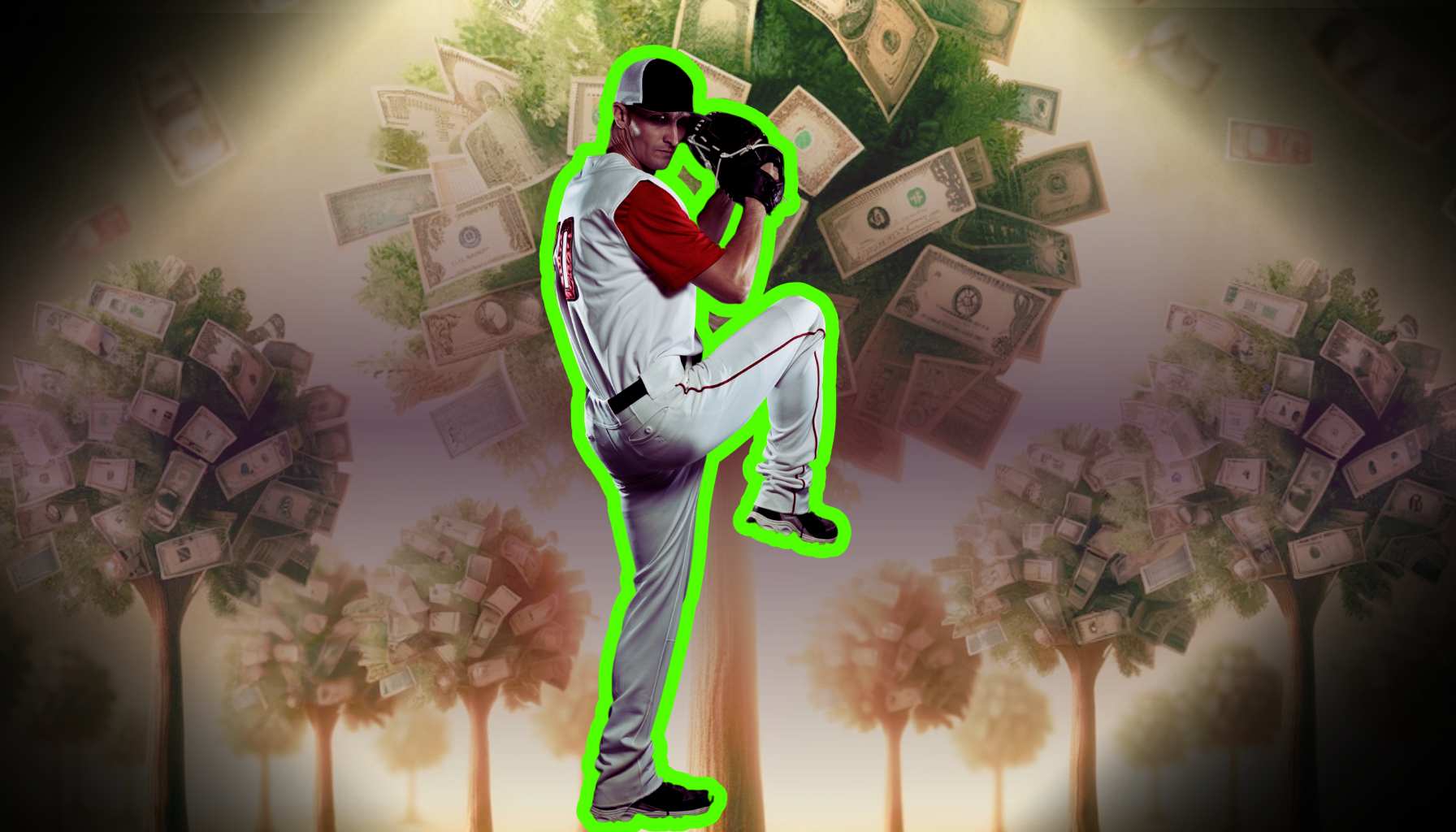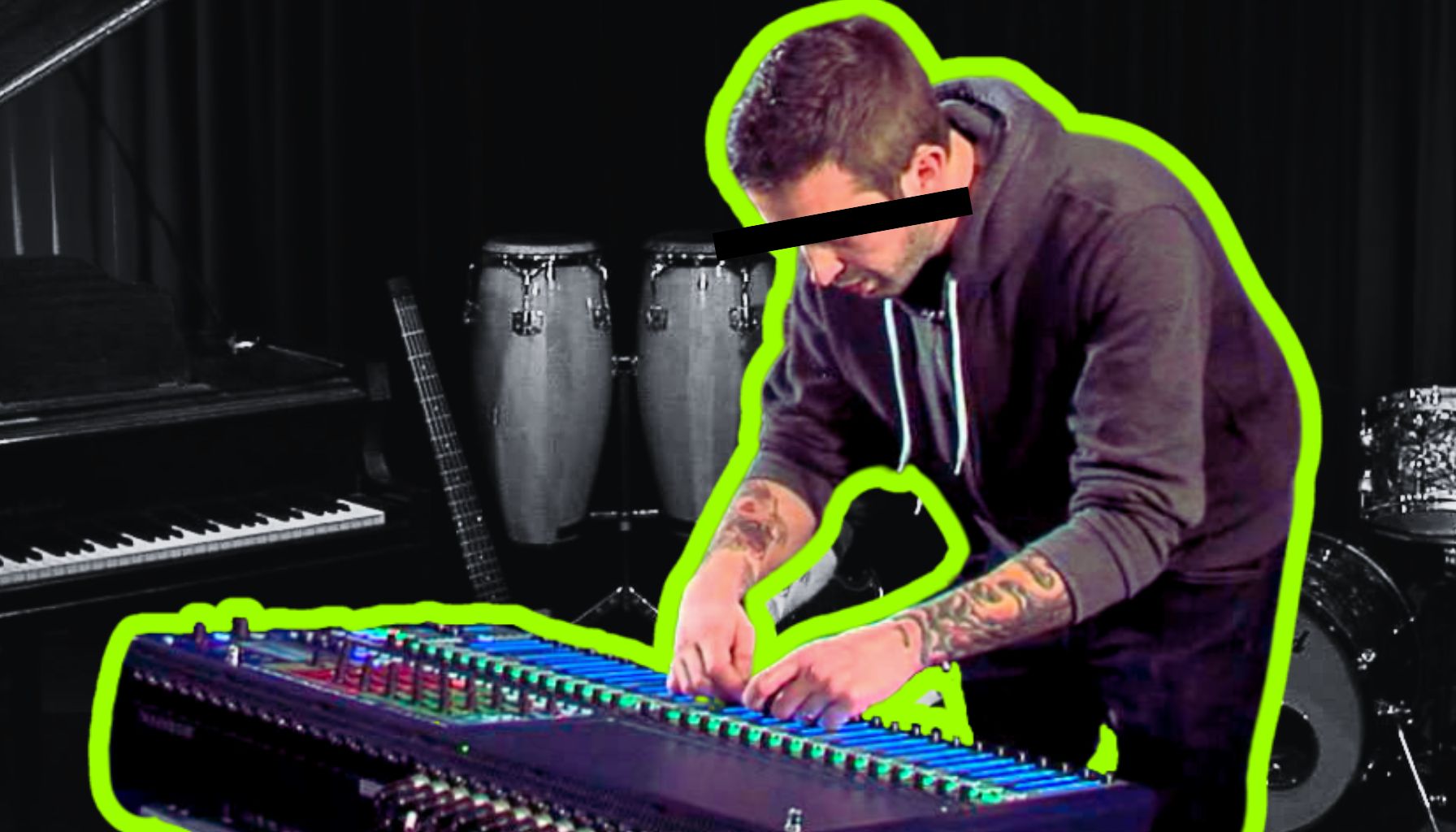Introduction to Music and Brand Partnerships
The spotlight’s on, the crowd’s hushed, and the stage is set for a duet that’s redefining the charts—not just the Billboard Hot 100, but the barometer of brand coolness, too.
Welcome to the world of music and brand partnerships, where the harmony between artistry and commerce can turn a jingle into a hit single and a logo into a cultural icon. But how did we get here, and where’s the beat taking us next?
The Evolution of Music in Branding and Advertising
Let’s rewind the track to the days when TV ads featured catchy tunes that you couldn’t skip, and brands were the patrons of the radio waves.
The historical interplay between music and brand promotions was like a simple two-step—brands needed a catchy beat, and musicians wanted the airplay.
Historical Interplay Between Music and Brand Promotions
From Coca-Cola’s “I’d Like to Teach the World to Sing” to Intel’s unmistakable bong, the blend of tunes and branding has long been a hit formula. But the relationship was more transactional than emotional. It was like a blind date between business and boogie—effective, but lacking that spark.
Transition From Traditional Advertising to Modern Partnerships
As the media landscape evolved with the digital revolution, the old-school jingle gave way to something more akin to a concept album—a collaboration that tells a story and resonates on a deeper level.
The transition from traditional advertising to modern partnerships saw brands becoming executive producers and artists stepping into the role of brand ambassadors. It’s not just about selling a product; it’s about selling a lifestyle.
Defining Today’s Music and Brand Partnerships
Today’s music and brand partnerships are more like a carefully choreographed dance—a fusion of image, ethos, and melody that can make both parties look cooler by association.
The Core Concepts and Types of Partnerships
The core concepts behind these alliances are rooted in authenticity and shared values. Whether it’s an emerging indie band aligning with a craft beer label or a pop superstar launching a line with a fashion giant, the types of partnerships are as varied as the genres on a streaming service playlist.
The Mutual Benefits for Artists and Brands
For artists, it’s about amplifying their reach and perhaps snagging some sweet, sweet cash without the grueling tour schedule. For brands, it’s about tapping into the artist’s cred to boost their own.
The mutual benefits for artists and brands are clear, but like any collaboration, it needs the right chemistry to hit the high notes. As we segue into the next section, we’ll dissect the anatomy of a successful music and brand partnership.
We’ll explore how selecting the right partner can lead to a crescendo of commercial success and cultural impact. So, don’t touch that dial—we’re just getting to the good part, where we delve into the criteria for ideal partnerships and the case studies that show us how it’s done. Because, in this business, the right hook can make all the difference, and I’m not just talking about the chorus.
Anatomy of a Successful Music and Brand Partnership
Let’s dissect the rockstar anatomy of a successful music and brand partnership. Think of it as a hit song; every element must be in perfect harmony for it to top the charts. It starts with the heart of the collaboration: the alignment between brand and artist values.
Selecting the Right Partner: Alignment between Brand and Artist Values
When a brand and an artist come together, it’s like a musical duet—their values need to harmonize. Imagine a punk rock band teaming up with a luxury spa. Sounds off-key, right? That’s why the criteria for ideal partnerships are crucial.
A brand should look for artists whose image, fan base, and ethos strike the same chords as their own. This isn’t a shotgun wedding; it’s a match made in marketing heaven. Diving into case studies of synergistic collaborations, take Red Bull and extreme sports or Lady Gaga and Polaroid—these are the power couples of brand partnerships.
They’re like peanut butter and jelly; different but complementary, enhancing each other’s flavors. A well-matched pair can lead to campaigns that resonate authentically with audiences, creating a buzz that’s music to both parties’ ears.
Crafting a Cohesive Narrative: Storytelling Through Music
But what’s a duet without a compelling story? The importance of authentic storytelling in partnerships can’t be overstated. It’s the narrative that gets fans invested in the collaboration, not just the catchy jingle.
Music has the power to evoke emotions and connect on a deeper level. Brands that can weave their message into the fabric of a song or music video create a narrative that sticks with the audience long after the last note is played. Strategies for embedding music into brand narratives range from scoring an emotive backdrop to a heartfelt commercial or featuring a song that encapsulates the brand’s message in a music video.
It’s about creating a storyline where the music and brand journey together, taking the audience on a memorable ride. As we fine-tune our understanding of what makes these partnerships tick, we’ll soon explore the innovative examples of music and brand integrations in the next section.
These are the trendsetters, the collaborations that not only make waves but ride them to new heights, demonstrating the power of creativity in marketing. In the ever-evolving concert of Music Business and Marketing, section two is the crescendo that builds upon the foundation laid by the introduction and paves the way for the detailed examples to come.
It’s the bridge in our song, connecting the history and concept of music-brand partnerships with the concrete examples that give them life.
As we turn the page to section three, keep the melody of strategic alignment and authentic storytelling in mind—it’s the chorus that will keep playing throughout our exploration of Music and Brand Partnerships: Beyond Traditional Advertising.
Innovative Examples of Music and Brand Integrations
Picture this: You’re watching your favorite artist’s latest music video, and there, amidst the guitar riffs and high notes, you spot a sleek, unmistakable logo. It’s not just a cameo; it’s a full-fledged partnership between melody and marketing.
Welcome to the stage of innovative examples of music and brand integrations, where products and tunes blend in a symphony of strategic promotion.
Product Placement and Sponsored Content in Music Videos
It’s no secret that product placement in music videos can hit the right note for brands looking for a captive audience. But it’s the creative incorporation of products and branding that really makes the campaign sing.
We’re not just talking about a soda can casually placed on a piano. We’re talking about integrating a brand so seamlessly that it moves the story forward—think Beats by Dre in nearly every locker room pump-up scene.
The proof is in the pudding—or rather, the analytics. Viewer reception and impact metrics often show a spike in brand recognition and positive sentiment when a product plays a natural part in the narrative.
Fans don’t just tolerate the presence of brands; they embrace them as part of the experience when done with finesse.
Co-Branded Merchandise and Limited Edition Releases
Then there’s the merchandise that fans can wear, turning them into walking billboards for both the brand and the artist. Developing an exclusive line of co-branded items can be a win-win. It’s a tangible expression of the partnership that fans can’t wait to get their hands on, from limited edition sneakers to co-branded cosmetics that promise to make you feel like a rockstar.
The marketing and distribution strategies for co-branded merchandise are key. Dropping a new line of merch in sync with a tour or album release can create a frenzy of excitement and urgency that leads to sold-out collections and enviable social media buzz.
Live Event Sponsorships and Music Festivals
The crescendo of music and brand partnerships might just be the live event sponsorships and music festivals. Brands get a backstage pass to engage with fans in an immersive environment, while artists get to perform with the backing of a sponsor that can amplify the reach and production value of the event.
It’s a dance of mutual benefit, with the audience getting an upgraded experience in the mix. The role of brand sponsorships in live music experiences is pivotal. They can turn a great show into an unforgettable one with VIP areas, branded stages, and interactive installations that resonate with the festival vibe. But it’s not without its challenges.
The key is ensuring that the association enhances the event without overshadowing the music itself. As we turn down the volume on these innovative examples, we’re queuing up the next track: leveraging digital platforms for collaboration.
From social media campaigns to exclusive streaming content, the digital realm offers a playlist of opportunities for brands and artists to create chart-topping partnerships. So, keep your ear to the ground and your eyes on the screen as we dive into how the digital landscape is remixing the rules of music and brand partnerships.
Leveraging Digital Platforms for Collaboration
As the digital drumroll crescendos, music and brand partnerships are marching to the beat of a new online rhythm. Enter the arena of digital platforms, where the art of collaboration is not just about creating buzz but engaging fans in a virtual concert of interactive experiences. So, let’s dive into the digital pool and swim through the currents of social media campaigns and streaming services.
Social Media Influencer Campaigns and Takeovers
Imagine scrolling through your feed when suddenly, your favorite artist is taking over a brand’s Instagram stories, strumming away on a branded guitar, or mixing beats wearing the latest in headphone tech. Social media influencer campaigns and takeovers are the virtual stages where artists and brands perform duets to an audience of millions.
Cross-promotion through artist and brand platforms is the digital handshake that introduces fans to a symphony of content they didn’t know they needed. It’s not just about plastering a logo next to a musician’s face; it’s about crafting stories and experiences that resonate on a personal playlist level.
Engaging fans with interactive social media campaigns is the hook, line, and sinker in this sea of digital attention spans.
Streaming Services and Exclusive Content Opportunities
And as the needle drops on the record of digital innovation, streaming services have become the DJs of exclusive content opportunities. Custom playlists, sessions, and brand-curated musical experiences are the VIP passes to a world where brands don’t just sponsor the artist; they become part of the artistry. Integration of branded content within streaming environments is like the perfect remix—it feels fresh yet familiar.
Whether it’s a pop star’s new album sponsored by a fashion label or a curated playlist for workout enthusiasts powered by a sports brand, streaming services offer a stage for partnerships to play on repeat. But let’s not hit pause just yet. As we sync our devices to the next section, we’ll turn up the volume on the business side of music and brand partnerships.
We’ll dive into the nitty-gritty of licensing, rights negotiations, and the ever-so-crucial ROI—because, at the end of the day, even the most harmonious partnerships need to make financial sense. So, keep your ears perked and your mind open as we explore the logistics that keep the music playing and the brands swaying.
The Business Side of Music and Brand Partnerships
Now that we’ve explored the digital stage where artists and brands perform their harmonious duets, let’s peel back the curtain and examine the less glamorous yet crucially important business side of music and brand partnerships. It’s time to talk shop about licensing, rights negotiations, and the almighty ROI—because, let’s face it, in the end, the show can’t go on if the numbers don’t add up.
Understanding Licensing and Rights Negotiations
Every brand dreams of hitching its wagon to a chart-topping hit, but without the proper licensing, that dream can quickly become a legal nightmare. Securing music rights for commercial use is a complex dance that requires understanding the intricate choreography of copyright laws. Brands must navigate the labyrinth of who owns what—a task that could make even the savviest of industry moguls sweat under the stage lights.
.
Then there’s the art of navigating royalties and profit-sharing agreements, which can feel like trying to hit a high note after a triple espresso—tricky, to say the least. Whether it’s a one-time sync fee for a commercial or an ongoing royalty deal for a campaign, striking the right chord in negotiations is crucial for a harmonious partnership.
Evaluating the Return on Investment
Once the ink dries on the contracts, the focus shifts to the return on investment (ROI). Brands and artists alike need to understand the quantifiable metrics versus the intangible benefits. Sure, social media likes and shares are great, but do they translate to sales or streams? Analyzing data such as engagement rates, conversion metrics, and sales figures is like reading sheet music; it tells the story of how well the partnership is performing.
However, the true magic lies in the long-term value and relationship building. It’s not just about the immediate payoff; it’s about setting the stage for future encores. A successful partnership can lead to increased brand loyalty, expanded audience reach, and an enhanced reputation for both parties.
As we wrap up this section, let’s not forget that the business side of music and brand partnerships is the backbone that supports the creative spectacle. With the legalities in tune and the financials on point, brands and artists can confidently take the stage together. Now, with the spotlight on ethical considerations and audience perception, we’re ready to delve into the next act.
Maintaining artistic integrity, ensuring transparency, and understanding audience reactions are the encore performance that can make or break a partnership. So, as the curtain rises on the next section, prepare for an honest look at the delicate balance between commercial success and artistic authenticity.
Ethical Considerations and Audience Perception
After crunching numbers and navigating the labyrinth of licensing, it’s time to step into the often-overlooked realm of ethics and audience perception in music and brand partnerships. It’s a place where the heart meets the art, and where the truth isn’t just spoken but sung loud and clear.
Maintaining Artistic Integrity in the Face of Commercialization
The tightrope walk between maintaining artistic integrity and embracing commercial success is one that could give a Wallenda a run for their money. Brands and artists alike need to ask themselves: when does a partnership enhance the art, and when does it start to erode it? Walking the line between these two can be as delicate as handling a vinyl record—fumble it, and you risk a scratch that can’t be un-heard.
Audience perception plays a pivotal role in this balance. Fans have a sixth sense for sniffing out when a partnership feels like a sell-out versus a genuine collaboration. Artist and fanbase reactions to commercial partnerships can range from standing ovations to throwing tomatoes. So, it’s crucial to ensure that any alliance strikes a chord that resonates with authenticity, not just profitability.
Transparency and Disclosure in Brand Affiliations
In an age where social media has put celebrities and influencers under the microscope, transparency is the name of the game. The importance of honesty in brand-related promotions cannot be overstated. It’s like telling your fans you autotuned your entire album—it might not be the end of the world, but they deserve to know.
Moreover, there are legal requirements and best practices that must be followed to ensure clear disclosure. The lines between paid promotion and personal endorsement should be as clear as the high notes in a Mariah Carey Christmas special. Keeping it real with your audience builds trust and respect, and let’s face it, no one likes to feel like they’re being played.
As we leave the ethical green room and prepare to step onto the stage of challenges and future prospects, remember that the industry is always listening. With the spotlight on potential risks and the role of evolving technologies, we’ll explore how to keep the music playing without hitting any sour notes. So, stay tuned as we dive into the murky waters of overexposure, consumer fatigue, and the exciting possibilities that the future holds for music and brand partnerships.
Challenges and Future Prospects of Music and Brand Partnerships
We’ve tuned into the ethical frequencies and jammed to the rhythm of transparency in the previous act. Now, let’s pivot to the potential sour notes: the challenges and future prospects that lie ahead for music and brand partnerships. It’s like being a roadie at a rock concert—things can get messy, but the show must go on.
Exploring Potential Risks and Pitfalls
In a world where consumers are bombarded with ads like confetti at a parade, overexposure can leave fans feeling more annoyed than enamored. It’s the classic case of too much of a good thing—like playing your favorite song on repeat until you can’t stand it anymore. Brands must tread carefully to avoid consumer fatigue, where the music stops being music to one’s ears and starts sounding like noise.
Then there’s the tricky business of targeting. Like a mismatched duet, missed targeting and inauthentic alliances can hit the wrong note with audiences. Fans have a keen ear for authenticity and can spot a poser from a mile away. It’s like putting a punk rock sticker on a classical violin; it just doesn’t jive.
Predicting the Trajectory of Brand and Music Collaborations
Looking ahead, the crystal ball of the music industry shows a symphony of evolving technologies in partnerships. Streaming services, virtual reality, and AI-generated music are not just opening new doors—they’re building an entirely new venue.
Brands that can harmonize with these technologies will find themselves headlining the future of advertising. Anticipating shifts in consumer behavior and industry dynamics is like trying to predict the next big music genre—you know it’s coming, but you’re not quite sure what it will sound like.
The key is to stay nimble and keep your ear to the ground. Will the industry lean towards more personalized experiences, or will crowd-sourced content take center stage? Only time will tell. As we wrap up this section, it’s clear that the road ahead for music and brand partnerships is both exciting and unpredictable.
The spotlight now turns to the past, where iconic case studies await to teach us valuable lessons. From the smash hits to the one-hit wonders, there’s wisdom to be gleaned as we review and analyze notable partnerships in the next act. So grab your backstage pass, and let’s learn from the legends as we gear up to redefine the potential of music and brand partnerships.
Case Studies: Breakdowns of Iconic Music and Brand Collaborations
After examining the potential pitfalls and future directions of music and brand partnerships, it’s time to flip through the history books and spotlight the lessons from some iconic collaborations. These case studies serve as a veritable ‘greatest hits’ compilation, offering insights into what makes a partnership more than just a flash in the pan.
Review and Analysis of Notable Partnerships
Let’s rewind the tape and look at some collaborations that hit all the right notes. Take, for example, the classic pairing of Michael Jackson and Pepsi. This duo didn’t just sell soda; they created pop culture moments that fizzed with excitement and energy.
It wasn’t just about the catchy jingle; it was about aligning a global brand with the King of Pop’s universal appeal. Then there’s the Beats by Dre phenomenon, which didn’t just market headphones but became a symbol of premium sound quality and cool.
Dr. Dre and Jimmy Iovine understood that music lovers don’t just listen with their ears—they listen with their aspirations. By associating their product with top-tier artists and athletes, they tapped into a lifestyle that consumers wanted to be a part of.
Lessons Learned: Takeaways for Future Collaborations
These case studies reveal success factors such as strategic execution, where timing and relevance are everything.
They show us that successful music-brand collaborations aren’t a one-off single; they’re an album with multiple hits that keep the audience engaged over time. But it’s not just about basking in the glory of past triumphs. Each collaboration teaches valuable lessons for future partnerships.
The importance of shared values, authentic connections, and innovative approaches stands out. It’s a reminder that, like any good album, it’s the deep cuts—the nuanced details—that can turn a partnership into a classic.
Conclusion: Redefining the Potential of Music and Brand Partnerships
As the final notes of our exploration into music and brand partnerships reverberate, it’s time to reflect on the symphony of insights we’ve uncovered. We’ve seen the landscape evolve from the straightforward jingles of yesteryear to today’s complex compositions of cross-promotional harmony.
Recap of Core Insights on Music and Brand Synergies
From Michael Jackson’s moonwalk with Pepsi to Beyoncé’s home run with Adidas, the power of music to elevate a brand’s message is undeniable. These collaborations go beyond a mere transaction; they’re about crafting stories that resonate on a personal level with audiences worldwide.
It’s a dance of authenticity, where the artist’s voice and the brand’s message must move in sync to captivate and engage. We’ve dissected the anatomy of these partnerships, looking at the skeleton of shared values and the muscles of mutual benefits that propel them forward.
Like a maestro conducting an orchestra, the key to success lies in the delicate balance of creativity, strategic alignment, and audience understanding.
Vision for Future Collaborations Beyond Traditional Advertising Avenues
The horizon for music and brand partnerships is as expansive as the digital landscape that frames it. With streaming platforms becoming the new concert halls and social media the stage, the opportunities for innovative collaborations are boundless.
Imagine virtual reality gigs where the brand experience is as immersive as the music, or AI-driven algorithms that pair consumers with songs and products in a uniquely personal way.
The future of these partnerships will be defined by how well brands can tune into the evolving tastes of their audience and the creative tides of the music industry. It will be about finding that sweet spot where commerce and artistry enrich each other, creating a richer tapestry of cultural moments.
FAQs on Music and Brand Partnerships: Beyond Traditional Advertising
As the dust settles on our exploration of the dynamic duet that is music and brand partnerships, you might still have some questions buzzing in your head like a catchy chorus that won’t quit. Let’s dive into some frequently asked questions that might just hit that high note of clarity you’re looking for.
How do music and brand partnerships differ from traditional music endorsements?
Think of traditional endorsements as a one-hit-wonder; they can be impactful but often don’t have the staying power of a true collaboration. Today’s music and brand partnerships are more like concept albums—thoughtful, integrated, and telling a story that resonates with fans on a deeper level. It’s not just about slapping a celebrity’s face on a product; it’s about weaving the artist’s music and persona into the brand’s narrative.
What factors should a brand consider when choosing a music partner?
Selecting a music partner is like crafting the perfect playlist; it’s all about harmony. A brand should consider the artist’s genre, values, and fan base to ensure they’re in tune with their own target audience. It’s also essential to consider the artist’s image and whether it amplifies the brand’s message without any dissonance.
How can smaller artists benefit from brand partnerships?
For the up-and-coming artists, a brand partnership can be like a VIP pass to the big leagues. It provides exposure, credibility, and financial support, helping them reach new audiences and amplify their music. It’s a symbiotic relationship where the brand gets cool points, and the artist gets a spotlight.
Are brand partnerships risking the over-commercialization of music?
There’s a fine line between selling out and selling smart. As long as the partnership feels authentic and the music integrity remains intact, fans are likely to applaud rather than boo. The key is to keep the music’s soul front and center, so it doesn’t get lost in the brand’s message.
What are some common pitfalls in music and brand partnership deals?
The biggest pitfall is a mismatch—like pairing a death metal band with a brand known for its soft and cuddly image. Other missteps include not defining clear goals, neglecting to plan for long-term engagement, and failing to communicate the partnership’s purpose to the audience.
How important is it for a music-brand partnership to be authentic, and why?
Authenticity in these partnerships is like the bass line in a great song—it’s the foundation that everything else is built upon. Without it, the whole thing can fall flat. Authenticity resonates with audiences, breeds loyalty, and creates a connection that goes beyond the product.
What strategies can brands use to ensure a partnership resonates with the intended audience?
To ensure a harmonious connection with the audience, brands should focus on storytelling, shared experiences, and interactive campaigns that engage fans. It’s about creating moments that matter and content that sticks.
How do changing technology and media consumption trends affect music and brand collaborations?
With the digital world constantly remixing the rules of engagement, brands and artists must be ready to adapt. Streaming services, virtual reality, and social media are the new stages, and understanding how to leverage these platforms is key to hitting the right notes with consumers.
What role do streaming platforms play in music and brand partnerships today?
Streaming platforms are the new record stores, concert halls, and radio stations all rolled into one. They offer a space for exclusive content, curated experiences, and direct access to fans.
For brands and artists alike, these platforms are invaluable tools for collaboration and connection. As the final track fades out and we close this set, remember that the world of music and brand partnerships is always evolving. Keep your finger on the pulse, stay tuned to the trends, and never be afraid to dance to the beat of innovation.


